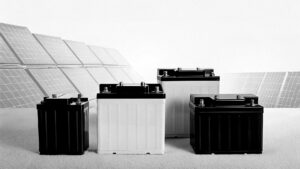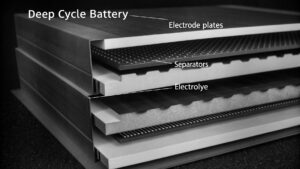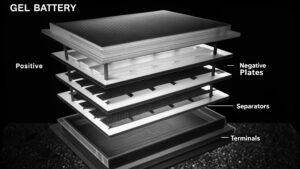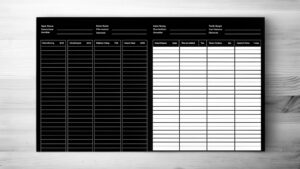How to Choose the Right Deep Cycle Gel Battery for Your Solar System?
You've invested in a solar system but face the challenge of finding the perfect battery. Unreliable power storage can lead to system failures, wasted energy, and costly replacements.
The right deep cycle gel battery for your solar system should match your energy needs, climate conditions, and budget. Look for batteries with high cycle counts, proper capacity ratings, and appropriate voltage. Gel batteries with tin additives perform better in extreme temperatures.

Over 10 years, we've helped countless solar system installers find their ideal power storage solution. The right battery can dramatically extend your system's life1 and efficiency, while the wrong choice can lead to frustration and financial loss2.
How Do I Choose the Right Deep Cycle Battery?
Selecting a deep cycle battery can be overwhelming with so many technical specifications. Many customers come to me confused about capacity ratings and cycle counts, risking poor system performance.
The ideal deep cycle battery should have a high cycle count (1000+ cycles at 50% DOD), appropriate amp-hour rating for your daily usage, and construction type suited to your environment. Gel batteries with tin (Sn) additives offer superior performance in varying temperatures.

The deep cycle battery market can be confusing with various technologies competing for your attention. Let me break this down into manageable factors:
Key Factors in Deep Cycle Battery Selection
| Factor | Why It Matters | BEVAULT Advantage |
|---|---|---|
| Cycle Life | Determines battery longevity | Our batteries feature 1200+ cycles at 50% DOD |
| Depth of Discharge (DOD) | Affects usable capacity | Safe 50-80% DOD without damage |
| Temperature Performance | Critical for outdoor installations | Tin additives prevent freezing/evaporation |
| Maintenance Requirements | Impacts total cost of ownership | Sealed design requires no maintenance |
| Charging Efficiency | Affects solar system performance | 99% charging efficiency in ideal conditions |
I've seen many solar installations fail prematurely because the batteries weren't matched to the application. One customer in Romania tried using standard automotive batteries for their off-grid solar system. Within six months, they had to replace everything. When they switched to our gel batteries with tin additives, their system has been running flawlessly for three years now, even through their cold winters.
How Do I Choose the Right Solar Battery?
The wrong solar battery can turn your renewable energy dream into a nightmare. Many struggle with premature battery failure because they underestimate the specialized requirements of solar applications.
Solar batteries should feature deep cycle capability, compatibility with solar charge controllers, appropriate voltage (usually 12V, 24V, or 48V systems), and capacity to handle your energy storage needs. Gel batteries excel in solar applications due to their non-spillable design and temperature resilience.

Solar power systems place unique demands on batteries that many standard batteries can't handle. Through our experience supplying batteries to solar installers across South America and Europe, I've identified these crucial considerations:
Solar-Specific Battery Requirements
-
Charge Acceptance Rate - Solar batteries must efficiently accept the variable charging current from panels during peak sunlight hours. Our gel batteries can accept up to C/3 charging rates safely.
-
Partial State of Charge (PSOC) Tolerance - Solar systems often operate batteries in PSOC conditions, which can quickly damage standard batteries. Our deep cycle gel batteries with special formulations resist sulfation under these conditions.
-
Temperature Compensation - Solar installations frequently face temperature extremes. The gel component in our batteries prevents electrolyte evaporation in heat and freezing in cold, while the tin content in plates improves conductivity across temperature ranges.
-
Self-Discharge Rate - During periods of low solar generation, low self-discharge becomes critical. Our gel batteries maintain less than 3% monthly self-discharge, preserving your stored solar energy.
A solar installer in Spain once told me they had tried five different battery brands before finding success with our BEVAULT gel batteries. The combination of extreme summer heat and occasional winter freezes had destroyed their previous batteries, but our temperature-resistant gel formulation solved their problem permanently.
What Is the Best Deep Cycle Battery for Solar System?
Many solar system owners waste money on inappropriate batteries, leading to poor performance and frequent replacements. The market's confusing claims make choosing difficult.
The best deep cycle battery for solar systems is typically a gel deep cycle battery with enhanced plate formulation (containing tin additives) that offers 1000+ cycles, maintenance-free operation, and temperature resistance between -20°C to 60°C. These batteries provide optimal performance in varying climate conditions.

After supplying batteries to thousands of solar installations worldwide, I've gained valuable insights into what makes a battery truly excel in solar applications. Here's what distinguishes top-performing solar batteries:
Comparative Analysis of Solar Battery Technologies
| Battery Type | Advantages | Disadvantages | Best For |
|---|---|---|---|
| Gel Deep Cycle | • Temperature resistant (-20°C to 60°C) • Maintenance-free • Non-spillable • Long cycle life |
• Higher initial cost • Sensitive to overcharging |
• Off-grid homes • Remote installations • Extreme climates |
| AGM Deep Cycle | • Good charge acceptance • Lower cost than gel • Non-spillable |
• Less temperature resistant • Shorter cycle life in deep discharge |
• Grid-tied systems • Moderate climates • Budget-conscious buyers |
| Flooded Lead-Acid | • Lowest initial cost • Widely available |
• Requires regular maintenance • Must remain upright • Poor extreme temperature performance |
• Controlled environments • Accessible locations • Where maintenance is not an issue |
| Lithium-Ion | • Highest cycle life • Lightest weight • Greatest depth of discharge |
• Very high cost • Requires BMS • Fire risk |
• Limited space applications • Weight-sensitive installations • High-budget projects |
At BEVAULT, we specialize in enhanced gel batteries with proprietary additives. Our manufacturing process incorporates tin into the plate construction, which significantly improves conductivity and cold-weather performance. The gel electrolyte we use contains silica compounds that prevent stratification and allow for operation in any orientation – critical for some specialized solar installations.
One of our distributors in the Netherlands reported that in comparative testing, our gel batteries maintained 92% of rated capacity at -10°C, while competing batteries delivered only 65% under identical conditions.
How Do I Know What Size Battery I Need for My Solar System?
Incorrectly sized batteries lead to either insufficient power storage or wasted investment. Many buyers struggle with the technical calculations needed for proper sizing.
To determine the right battery size for your solar system, calculate your daily energy consumption in watt-hours, decide how many days of autonomy you need, factor in depth of discharge limitations (typically 50%), and account for system voltage. The resulting amp-hour capacity will guide your battery selection.

Battery sizing is where many solar installations go wrong. Based on my experience helping customers from small residential systems to large commercial installations, here's a methodical approach:
Step-by-Step Battery Sizing Process
-
Calculate Daily Energy Consumption
First, list all appliances and their wattage ratings, then multiply by daily hours of usage to get watt-hours (Wh).Example calculation:
- 5 LED lights (10W each) × 5 hours = 250Wh
- Refrigerator (150W) × 24 hours × 1/3 duty cycle = 1,200Wh
- TV (100W) × 4 hours = 400Wh
- Total daily consumption = 1,850Wh
-
Determine Days of Autonomy
Consider how many days you need to run without solar input (cloudy days).- Sunny climate: 2-3 days
- Variable climate: 3-5 days
- For our example, let's use 3 days
-
Account for Depth of Discharge
For longevity, deep cycle gel batteries should not be discharged below 50%.- Required capacity = (Daily consumption × Days of autonomy) ÷ DoD percentage
- 1,850Wh × 3 days ÷ 0.5 = 11,100Wh
-
Convert to Amp-Hours at System Voltage
Most solar systems operate at 12V, 24V, or 48V.- For a 24V system: 11,100Wh ÷ 24V = 462.5Ah
- This means you need batteries totaling approximately 460Ah at 24V
-
Factor in Temperature Derating
Battery capacity decreases in cold weather.- At 0°C, expect about 80% of rated capacity
- At -20°C, expect only 50% of rated capacity
I recall helping a customer in Portugal who initially purchased batteries with just 200Ah capacity for their off-grid home. After frequent power shortages, we recalculated their needs based on actual usage patterns and upgraded them to a properly sized 460Ah battery bank. They haven't experienced a single power shortage in the two years since.
Conclusion
Selecting the right deep cycle gel battery for your solar system requires understanding your energy needs, climate conditions, and battery technologies. Choose batteries with tin additives for temperature resistance, appropriate capacity for your consumption, and gel technology for maintenance-free operation.